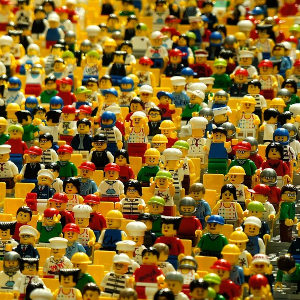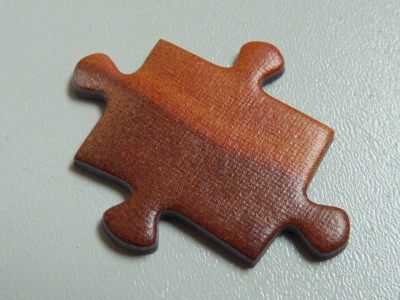Speed puzzling players arranging jigsaw pieces not because it’s a mundane task; it’s a strategic dance that lays the foundation for lightning-fast puzzle solving! I’m talking from experience here. The first time you intentionally arrange jigsaw puzzle pieces, it puts your intentions of solving into a whole new light.
Speed Puzzle Players are Ready for Action

Picture a puzzle table transformed into a meticulously organized battlefield, where pieces are sorted, grouped, and ready for action. It’s a power move that everyone needs to consider.
Why do speed puzzling players arrange jigsaw pieces, you ask? Well, it’s all about efficiency, my friend. By organizing pieces based on color, pattern, and shape, players create a visual roadmap that streamlines the puzzle-solving process. Every carefully arranged pile becomes a treasure trove of potential arranged connections, guiding players towards victory with each strategic placement.
Table of Contents
There is another reason speed puzzle players arrange jigsaw puzzle pieces. It’s also a delightful puzzle-solving ritual that sparks joy and ignites the imagination. As players sift through the sea of shapes and colors, they embark on a thrilling treasure hunt, searching for that elusive piece that holds the key to unlocking the puzzle’s mysteries.
With each piece sorted and placed with precision, players feel a sense of accomplishment and anticipation. Knowing that they’re one step closer to completing the puzzle and basking in the glory of victory, the real journey begins.
Speed puzzling players often use a combination of speed puzzling tips to efficiently arrange and connect puzzle pieces. The goal is to streamline the process, reduce searching time, and enhance overall puzzle-solving speed.
Remember before your start to prepare workspace for assembling a large puzzle. Simply measuring the dimensions of the completed puzzle and compart it to the table you want to use to ensure you have adequate space. Select a stable and flat surface in a quiet area where you can work undisturbed for extended periods. It’s important to choose a spot where the puzzle can remain, undisturbed, if you need more time to complete it than initially expected. Planning for sufficient time is crucial, especially for puzzles with 1,000 pieces or more, as these can often take longer to finish than you might think.
What Techniques do Speed Puzzling Players Use to Sort Puzzles?
I’ve been watching my pals (and making notes of my skills) all the while, making the way puzzle sorting happens a priority. What I’ve learned is everyone does it a little different. And that’s a good thing!
9 Jigsaw Puzzle Pieces Sorting Patterns

Here are some common strategies employed by speed puzzlers to arrange pieces effectively:
1. Edge Piece Sorting.
Start with Edges, please. The first step is often to locate and assemble the edge pieces. Speed puzzlers separate these pieces from the rest, creating a framework for the entire puzzle. This initial structure provides a clear starting point for building the overall image.
2. Color and Pattern Grouping.
Sort by Color and Pattern to go faster. Players often group pieces based on color or pattern similarities. This helps speed up the matching process, as pieces with similar colors or patterns are likely to be adjacent to each other in the completed image.
3. Separate Distinctive Elements.
Identify Unique Pieces first to help your speed. Distinctive elements within the puzzle, such as unique shapes or uncommon colors, are often separated for focused attention. These pieces, though fewer in number, can be crucial in making rapid progress and serve as anchor points for connecting larger sections.
4. Build Sections Simultaneously.
The Multitasking Approach helps speed. Speed puzzlers often adopt a multitasking approach by working on multiple sections of the puzzle simultaneously. While focusing on one area, they may scan and sort pieces for other sections, optimizing their time and keeping a steady pace throughout the process.
5. Continuous Rotation of Puzzle.
Dynamic Perspective will help your puzzle speed. Regularly rotating the puzzle provides different perspectives and helps speed puzzling players identify connections that may not be immediately apparent. This dynamic approach prevents tunnel vision and enhances the speed puzzler’s ability to see patterns from various angles.
6. Use Peripheral Vision.
Expand Visual Field to make the most of your puzzle skills. Skilled speed puzzlers train their peripheral vision to capture details beyond their immediate focus. This enables them to keep track of multiple puzzle sections simultaneously, reducing the need to shift their gaze frequently.
7. Trial and Error with Quick Adjustments.
Efficient Trial and Error is part of the game. Speed puzzlers are not afraid to experiment with trial and error. If a piece doesn’t fit initially, they quickly adjust and try neighboring pieces. This rapid iteration allows for efficient problem-solving without dwelling on individual pieces for too long.
8. Prioritize Critical Connections.
Identify Key Pieces to start your play. Players identify key pieces that connect different sections of the puzzle. Focusing on these critical connections ensures the overall coherence of the image and helps speed puzzling players strategically prioritize their efforts.
9. Maintain Focus and Momentum.
Continuous Momentum makes a big difference. Speed puzzlers maintain a steady pace, avoiding unnecessary pauses. This continuous momentum prevents the loss of concentration and keeps the puzzle-solving process fluid.
Other Questions You Should be Thinking about…
What is a specific method to streamline the puzzle assembly process?
Organize the puzzle pieces into smaller, more manageable groups that share similar characteristics. This tactic allows you to quickly find and match pieces, reducing the time spent on trial and error.
How can I reduce the complexity of sorting puzzle pieces?
By categorizing the pieces into groups based on their physical features, specifically the presence of tabs and blanks, you can simplify the sorting process.
You Solved Your Jigsaw Puzzle! What is Next?
Upon completing a puzzle, you have several options to consider for sharing it or gearing up for a new challenge. One popular choice is to preserve your completed puzzle by gluing it and placing it in a frame; this way, it serves as a beautiful piece of art and a testament to your accomplishment.
Alternatively, if you wish to pass on the joy of puzzling, you can dismantle the assembled puzzle and offer it to someone else to assemble. Ready for further challenges? Embrace another puzzle, potentially increasing the complexity or the piece count, such as tackling a 1,000-piece or a more intricate puzzle.
Remember, regular practice is key in sharpening your puzzling skills, similar to improving at a sport or mastering a professional skill.
Adapting and Combining
Adapting and combining these strategies based on the speed puzzle players characteristics is key for success. Use what tips you feel are best suited for you. Tweak and play to see what works best.
I’ve learned through my practice and experience, players develop an intuitive understanding of how to arrange pieces efficiently, making the most of their skills and optimizing their performance in speed puzzling competitions.
Which is why I encourage you to consider your personal strategy and even observe other speed puzzling players to see how you can work your fastest time adjusting the pieces to fit.
